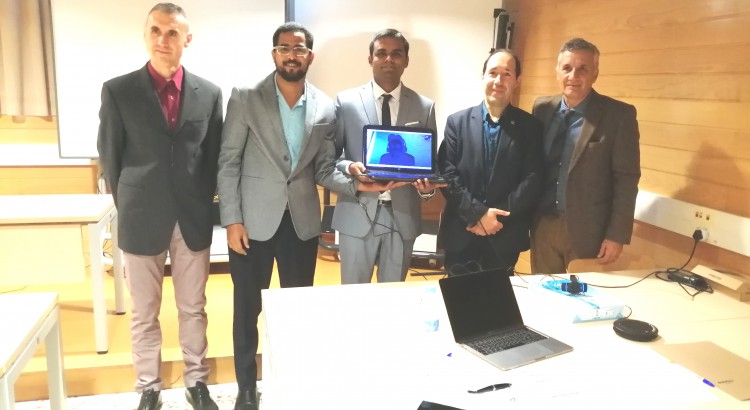Segmentation and Classification of Multimodal Medical Images based on Generative Adversarial Learning and Convolutional Neural Networks
Abstract: Medical imaging is an important means for early illness detention in the majority of medical fields, which provides better prognosis to the patients. But properly interpreting medical images needs highly trained medical experts: it is difficult, time-consuming, expensive, and error-prone. It would be more beneficial to have a computer-aided diagnosis (CAD) system that can automatically outline the possible ill tissues and suggest diagnosis to the doctor. Current development in deep learning methods motivates us to improve current medical image analysis systems. In this thesis, we have considered three different medical diagnosis, such as brenst cancer from mammograms and ultrasound images, skin lesion from dermoscopic images, and retinal diseases from fundus images. These tasks are very challenging due to the several sources of variability in the image capturing processes.
Firstly, we propose a method to analyze the breast cancer in mammograms. In a first stage, we utilize the Single Shot Detector (SSD) method to locate the possibly abnormal regions, which are called regions of interest (ROIs). Then, in a second stage we apply a conditional generative adversarial network (cGAN) method to segment possible masses within the ROIs. This network works efficiently with a reduced number of training images. In a third stage, a convolutional neural network (CNN) has been introduced to classify the shape of the masses (round, oval, lobular and irregular). Besides, we also try to classify those masses into four distinct breast cancer molecular subtypes (Luminal-A, Luminal-B, Her-2, and Basal-like), based on its shape and also on the micro-texture rendered in the image pixels. Moreover, for ultrasound image processing, we extended the proposed cGAN model by introducing a novel channel attention acd weighting (CAW) block, which improves the robustness of segmentation by fostering the more relevant features of the masses. Some statistical analysis corroborate the accuracy of the segmentem masks. Finally, we also performed a classification between benign and malignant tumors based on the shape of the segmented masks.
Second, skin lesion segmentation in dermoscopic images is still challenging due to the low contrast and fuzzy boundaries of lesions. Besides, lesions have high sidilarity to healthy regions. To overcome this problems, we introduce a novel layer inside the encoder of the cGAN, called factorized channel attention (FCA) block. It integrates a channel attention mechanism and a residual 1-D kernel factorized convolution. The channel atteation mechanism increases the discriminability between the lesion and non-lesion features by taking into account feature channel interdependencies. The 1-D factorized kernels provide extra convolutional layers with a minimal set of parameters and a residual connection that minimizes the impact of image artifacts and irrelevant objects.
Third, segmentation of retinal optic disc in fundus photographs plays a critical role in the diagnosis, screening and treatment of many ophthalmologic diseases. Therefore, we have applied our cGAN method to the task of optic disc segmentation, obtaining promising results with a really short number of training samples (less than twenty). Experiments with these three kinds of medical image diagnosis have been performed for quantitative and qualitative comparisons with other state-of-the-art methods, to show the advantages of the proposed detection, segmentation and classification techniques.
